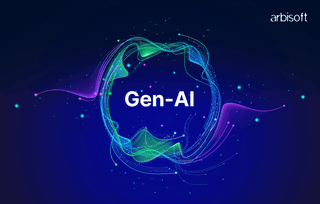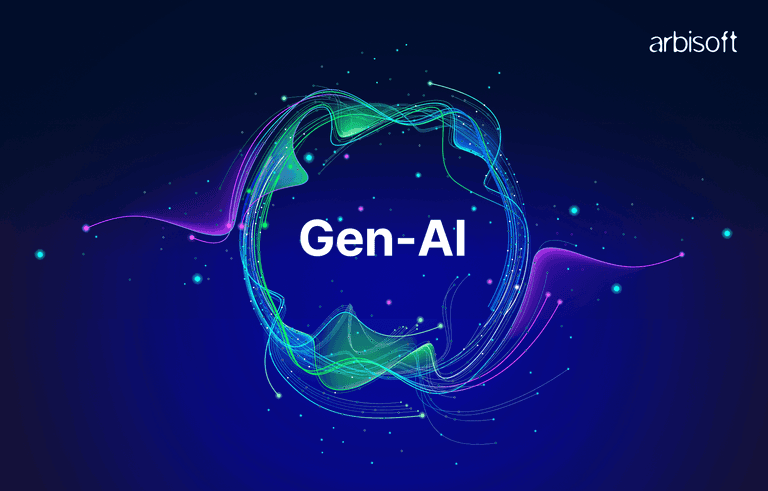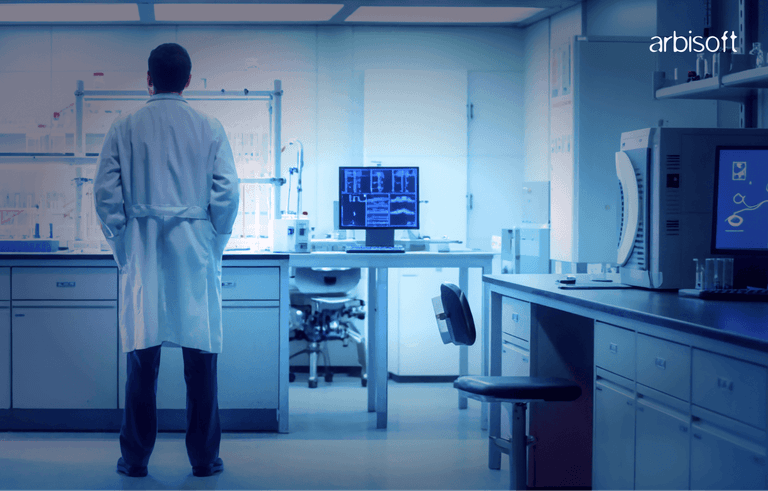We put excellence, value and quality above all - and it shows




A Technology Partnership That Goes Beyond Code

“Arbisoft has been my most trusted technology partner for now over 15 years. Arbisoft has very unique methods of recruiting and training, and the results demonstrate that. They have great teams, great positive attitudes and great communication.”
AI in Predictive Maintenance: Reducing Downtime and Boosting Operational Efficiency

Imagine running a factory where machines work around the clock to produce goods. One day, a critical machine suddenly breaks down, halting production. Orders are delayed, workers are left waiting, and repair costs shoot up. The worst part? The machine had been showing warning signs, but no one noticed.
This scenario is common in many industries. Traditional maintenance strategies, either waiting for a breakdown or servicing equipment at fixed intervals, often lead to unexpected failures, unnecessary costs, and wasted time. But what if you could predict issues before they happen?
This is where AI-powered predictive maintenance comes in. Instead of reacting to problems, AI helps businesses prevent them. By analyzing data from sensors, past performance, and real-time conditions, AI can detect early warning signs of failure and recommend maintenance before a breakdown occurs.
Let’s explore how AI-driven predictive maintenance works, why it’s a game changer, and how different industries are using it to stay ahead.
Learn how leading industries use AI for smarter maintenance.

Download the guide to top AI predictive maintenance software across industries!

The Traditional Maintenance Problem
For decades, businesses have relied on two main maintenance strategies:
1. Reactive Maintenance (Break-Fix Approach)
- Machines are repaired only after they fail.
- Leads to costly repairs, production stoppages, and potential safety risks.
- Example: A conveyor belt in a factory suddenly stops, causing production to halt and delaying shipments.
2. Preventive Maintenance (Scheduled Servicing)
- Machines are serviced at fixed intervals, whether they need it or not.
- Reduces unexpected breakdowns but results in unnecessary maintenance costs and downtime.
- Example: A company replaces machine parts every six months, even if they are still in good condition.
Both approaches have significant flaws. Reactive maintenance causes unexpected failures, while preventive maintenance wastes time and resources. AI-powered predictive maintenance offers a smarter, more cost-effective solution.
How AI is Revolutionizing Predictive Maintenance
AI-powered predictive maintenance works by using real-time data, machine learning, and IoT sensors to monitor equipment health and detect issues before they cause failure. Here’s how it works step by step:
1. AI Monitors Machines in Real-Time
AI-driven sensors track key performance indicators (KPIs) like:
- Temperature
- Vibration levels
- Pressure
- Energy consumption
- Sound patterns
If any reading goes beyond the normal range, AI flags it as a potential problem.
Example: A factory uses AI sensors to track a motor’s temperature. When AI detects that the motor is heating up beyond safe levels, it sends an alert to maintenance teams before it overheats and fails.
2. AI Detects Patterns Humans Might Miss
Humans can only analyze so much data at a time, but AI can process millions of data points simultaneously. AI systems use machine learning algorithms to compare real-time data with historical trends and spot subtle warning signs of failure.
Example: A manufacturing plant experiences random breakdowns in its assembly line. AI studies past failures and finds a pattern, each breakdown was preceded by a slight increase in vibration. With this insight, maintenance teams know when to intervene before future failures.
3. AI Predicts Failures Before They Happen
AI doesn’t just detect current issues, it predicts future ones. It calculates the remaining lifespan of machine components and estimates when a failure is likely to happen.
Example: A wind farm uses AI to analyze turbine performance. The AI system predicts that certain turbines will need blade replacements in three months based on wear-and-tear data. The company schedules maintenance in advance, avoiding expensive emergency repairs.
4. AI Optimizes Maintenance Schedules
Instead of servicing machines at fixed intervals, AI recommends maintenance only when necessary. This prevents unnecessary shutdowns while ensuring that equipment stays in peak condition.
Example: An airline traditionally inspects engines every six months. AI analysis shows that some engines don’t need maintenance that often, while others require more frequent checks. By adjusting schedules, the airline saves millions in maintenance costs while ensuring safety.
Benefits of AI-Powered Predictive Maintenance
1. Reduced Downtime and Production Losses
Unplanned machine failures can seriously disrupt operations. AI-driven predictive maintenance helps prevent this by using machine learning (ML) algorithms, IoT sensors, and real-time data analytics to monitor equipment health. Technologies like anomaly detection models, time-series forecasting, and digital twins analyze sensor data, such as temperature, vibration, and pressure, to spot early warning signs of failure. This allows businesses to schedule maintenance at the right time, avoiding unexpected breakdowns and keeping operations running smoothly. AI also helps with root cause analysis, which means businesses can quickly identify and fix recurring issues.
2. Lower Maintenance Costs
Traditional maintenance approaches, like preventive maintenance, can be costly because they involve frequent, unnecessary servicing. AI-powered predictive maintenance reduces these costs by using deep learning models, historical failure data, and predictive analytics to determine when equipment actually needs repairs. With computer vision, ultrasonic sensors, and AI-driven fault detection, businesses can monitor equipment wear, detect leaks, and spot issues early. This means fewer labor costs, lower spare parts inventory, and less spending on emergency repairs. Some AI systems also provide prescriptive maintenance, offering recommendations on the most cost-effective maintenance strategies.
3. Longer Equipment Lifespan
AI helps businesses extend the life of their machines by using condition-based monitoring (CBM), real-time diagnostics, and AI-driven asset performance management (APM) platforms. These systems analyze data using neural networks, thermal imaging, and sensor fusion to detect signs of wear and tear. Instead of following a fixed maintenance schedule, businesses can service equipment only when necessary, preventing both excessive wear and premature failures. This approach reduces the need for frequent replacements, lowers capital expenses, and improves return on investment (ROI).
4. Improved Worker Safety
Unexpected equipment failures can be dangerous, especially in industries like manufacturing, construction, and mining. AI improves safety by using predictive risk assessment models, automated failure alerts, and AI-powered robotic inspections to monitor hazardous areas. Natural language processing (NLP) and AI chatbots allow workers to report issues quickly, while computer vision-based surveillance systems detect unsafe conditions in real time. Some AI systems can even automatically shut down faulty equipment before an accident happens, helping businesses comply with safety regulations and reduce workplace injuries.
5. More Sustainable Operations
AI-powered predictive maintenance helps businesses operate more sustainably by optimizing energy use, reducing waste, and lowering carbon emissions. Technologies like AI-driven energy efficiency models, digital twins, and emissions monitoring systems allow companies to track their environmental impact. AI also helps schedule maintenance efficiently, preventing unnecessary downtime and resource waste. By predicting when equipment will become inefficient, businesses can replace parts at the right time, avoiding excessive energy consumption and pollution.
If you're interested in how data centers manage energy consumption in the digital age, check out our blog on The Impact and Sustainability of Data Centers' Energy Consumption.
Industries Benefiting from AI in Predictive Maintenance

The Future of AI in Maintenance
Predictive maintenance is just the beginning. Future advancements will make AI even smarter, with:
- Autonomous Maintenance: AI will not only predict failures but also schedule and initiate automated repairs.
- Digital Twins: AI will create virtual models of machines, allowing engineers to test solutions before applying them to real equipment.
- Cloud-Based AI Maintenance: Companies will have access to real-time machine health data from anywhere in the world, improving decision-making.
Final Thoughts: Why Predictive Maintenance is a Competitive Advantage
AI-powered predictive maintenance isn’t just about fixing machines, it’s about transforming the way businesses operate. By reducing downtime, lowering costs, and improving efficiency, companies can stay ahead in an increasingly competitive market.
Companies that fail to adopt AI in maintenance will face higher costs, unexpected failures, and lost revenue. Those who embrace AI-driven predictive maintenance will have faster production, better equipment performance, and greater profitability.
In today’s tech environment, predictive maintenance isn’t just an option, it’s a necessity. The question is: Are you ready to future-proof your business? Take control of your equipment’s health with our Predictive Analysis solutions.
FAQs: AI in Predictive Maintenance
1. What is AI-powered predictive maintenance?
AI-powered predictive maintenance is a smart way to prevent machine failures before they happen. It uses sensors, real-time data, and AI to monitor equipment health and detect early warning signs of breakdowns.
2. What kind of data does AI analyze in predictive maintenance?
AI looks at temperature, vibration levels, pressure, energy usage, sound patterns, and historical failure trends to identify potential problems.
3. How is AI better than traditional maintenance methods?
Traditional maintenance either waits for a breakdown (reactive) or follows a fixed schedule (preventive). AI-based predictive maintenance is smarter because it only performs maintenance when needed, saving time and costs.
4. Is AI predictive maintenance difficult to implement?
It depends on the company’s existing setup. If machines already have sensors, AI software can start analyzing data quickly. Companies without sensors may need to install them first.
5. What is the future of AI in predictive maintenance?
In the future, AI will automate repairs, create digital twins (virtual machine models), and use cloud technology to monitor machines from anywhere in the world.
























